Adolescent Boys' Perspectives on Reproductive Health and Gender Dynamics: A Study in Rural Rangpur District, Bangladesh
Md. Maksud-ul Hasan1*, Anamul Hoque2, Md. Ariful Islam3, Md. Enamul Hassan4, Lutfunnaher Begum5, Md. Sohedul Islam6
1Research, Monitoring & Evaluation Expert, Bangladesh
2Research & Development Professional, Bangladesh
3Assistant Professor, Department of Sociology, Varendra University, Bangladesh
4BRAC District Coordinator- Advocacy for Social Change, Bangladesh
5Monitoring & Evaluation, Research Expert, Bangladesh
6Program Quality Manager, Bangladesh
Corresponding Author: Md. Maksud-ul Hasan
Received: 07 March 2024; Accepted: 13 March 2024; Published: 25 March 2024
Article Information
Citation: Md. Maksud-ul Hasan, Anamul Hoque, Md. Ariful Islam, Md. Enamul Hassan, Lutfunnaher Begum, Md. Sohedul Islam. Adolescent Boys' Perspectives on Reproductive Health and Gender Dynamics: A Study in Rural Rangpur District, Bangladesh. Journal of Women’s Health and Development 7 (2024): 17-22
DOI: 10.26502/fjwhd.2644-288400116
View / Download Pdf Share at FacebookAbstract
Background: Adolescence is a critical period for sexual and reproductive health (SRH) education in Bangladesh. This study explores the perspectives of adolescent boys (13-18 years) on reproductive health and gender dynamics in rural Rangpur District.
Methods: The study was led using a survey method, and data were collected using multistage stratified random sampling from 336 boys across six sub-districts in Rangpur from October to December 2023.
Results: Most participants were 14-16 years old (61.7%) and in grades/Class 10-11 (57.8%). While 70.2 percentage reported awareness of menstruation, 15.2% remained uninformed, highlighting potential educational gaps. Friends (26.8%) and health service providers (22.9%) were primary sources of knowledge. HIV/AIDS awareness was high (91.7%). Modern family planning method awareness was 81.0%, with pills and injectables surpassing IUD/Copper T (Table 2). Community clinics (66.1%) and family welfare centers (23.8%) were primary information sources, with doctors the most frequent (40.5%). Over 60% encountered SRH posters in healthcare facilities. Traditional expectations remained strong, with over 60% perceiving it unusual for a woman to leave the house without her husband's permission. Educational attainment at the tenth-grade level was significantly associated with more excellent HIV/AIDS knowledge (p=0.000*), and knowledge of STIs was significantly associated with awareness of modern family planning methods (p=0.000*).
Conclusions: This study identifies knowledge gaps and highlights the need for comprehensive SRH education tailored to rural adolescents in Bangladesh. Interventions addressing traditional gender roles and integrating family planning into STI prevention efforts are crucial.
Keywords
Adolescent; Gender; Reproductive Health; HIV/AIDS; STI
Adolescent articles; Gender articles; Reproductive Health articles; HIV/AIDS articles; STI articles
Article Details
Introduction:
The sexual and reproductive health of adolescents is a insistent public health concern, particularly in Bangladesh. Research highlights the crucial need to understand teenagers' unique challenges and perspectives as they navigate this critical life stage [1, 2, and 10]. The rise of digital media has sparked anxieties about the influence of pornography on adolescent attitudes and behaviors [3, 18, and 20]. Moreover, societal norms and educational approaches significantly shape their knowledge and stances toward reproductive health [5, 12, and 16]. While commendable efforts have been made to address sexual and reproductive health (SRH) issues in Bangladesh, the effectiveness of existing interventions and the impact of various socio-cultural factors remain under continuous scrutiny [13, 15, and 17]. This study aims to contribute to present knowledge by investigative the perspectives of male adolescents aged 13-18 in rural Rangpur District. By analyzing their views on reproductive health and gender dynamics, we hope to offer valuable insights for shaping tailored interventions and policies in this vital area.
Methodology
This cross-sectional study delved into the perspectives of adolescent boys (13-18 years) in rural Rangpur District, Bangladesh, regarding reproductive health and gender dynamics. Conducted across six sub-districts (Pirgachha, Pirganj, Gangachara, Mithapukur, Taraganj, and Kaunia) from October to December 2023, it employed a survey method and multistage stratified random sampling with 336 participants. Trained interviewers administered a structured questionnaire via face-to-face interviews, ensuring privacy and informed consent. Covering demographics, reproductive health knowledge, gender role attitudes, information access, and decision-making participation, the questionnaire provided rich data. Ethical considerations were prioritized, with approved protocols, confidentiality, and withdrawal rights assurances. Employing quantitative analysis (descriptive and inferential statistics) through SPSS (Statistical Package for the Social Sciences) version 25, the study's findings, presented in tables and graphs, aim to deepen understanding of this crucial topic in this rural context.
Results
This study investigated the viewpoints of 336 adolescent boys in rural Rangpur, Bangladesh, focusing on their understanding gaps, prevailing attitudes, and sources of information. The majority of participants were predominantly aged 14-16 (61.7%) and enrolled in grades 10-11 (57.8%), indicating a pivotal developmental phase for comprehending their perspectives on reproductive health and gender roles (Figure 1, 2). A considerable proportion (70.2%) of respondents reported awareness of menstruation, with 15.2% unfamiliar with it and 14.6% refraining from answering. Notably, friends and health service providers constituted about 50% of the respondents' knowledge about menstruation/menstrual cycle, whereas formal education, such as books, accounted for only 6.5% (Figure 3, 4). Awareness of HIV/AIDS was high (91.7%), but knowledge of STI signs and symptoms varied, with approximately 20% expressing uncertainty or lack of knowledge (refer to Table 1). Most participants (81.0%) were familiar with modern contraceptive methods, particularly pills and injectables, while awareness of methods like IUD/Copper T and Norplant/implant was relatively lower. A majority of 52.7% of the adolescent boys did not know about Norplant/implant (Table 1). Community clinics (66.1%) and family welfare centers (23.8%) emerged as the primary sources of information, with doctors being the most consulted, followed by nurses and community health workers. Traditional birth attendants were infrequently mentioned, suggesting the need for diverse health education strategies (Table 2 and Table 3).
Furthermore, over 60% of participants encountered sexual reproductive health posters and brochures in healthcare facilities, underscoring the potential of this medium for disseminating knowledge (Figure 5). Traditional expectations persisted, with more than 60% of respondents considering a woman leaving the house without her husband's permission inappropriate. Additionally, behaviors such as disobedience, arguing, and neglecting children were viewed as deviations from prescribed gender roles (Table 4). Statistical analysis using Fisher's Exact Test revealed significant associations between knowledge about HIV/AIDS and educational attainment at the tenth-grade level (p-value=0.000*) (Table 5). A significant association was also observed between knowledge about STIs and awareness of modern family planning methods (p-value=0.000*). The table shows that among those with knowledge about STIs, 220 individuals were aware of modern family planning methods, whereas 35 were not. The odds ratio (OR) of 2.866 indicated that individuals lacking awareness of modern family planning methods were 2.866 times more likely to develop STIs than those with knowledge about them (Table 6).
Table 1: Knowledge and Awareness of Reproductive Health (HIV/AIDS and sexually transmitted infections.
|
Knowledge and Awareness of Reproductive Health |
Frequency |
Percent |
|
|
Have you heard of HIV or AIDS |
Yes |
308 |
91.7 |
|
No |
25 |
7.4 |
|
|
I don't want to answer |
3 |
0.9 |
|
|
Possible to cure AIDS |
Yes |
65 |
19.3 |
|
No |
217 |
64.6 |
|
|
I don't want to answer |
24 |
7.1 |
|
|
I don't know |
30 |
8.9 |
|
|
Heard of STI |
Yes |
249 |
74.1 |
|
No |
87 |
25.9 |
|
|
Know about Male Signs/Symptoms of Sexually Transmitted Infections (STIs) |
Yes |
202 |
60.1 |
|
No |
16 |
4.8 |
|
|
I don't know |
118 |
35.1 |
|
|
Signs and symptoms of a sexually transmitted disease in a man |
Discharge from penis |
99 |
29.5 |
|
Pain during urination |
80 |
23.8 |
|
|
Ulcers/sores in the genital area |
5 |
1.5 |
|
|
Others |
18 |
5.4 |
|
|
I don't know |
134 |
39.9 |
|
|
Knowledge about Female Signs/Symptoms of Sexually Transmitted Infections (STIs) |
Yes |
198 |
58.9 |
|
No |
13 |
3.9 |
|
|
I don't know |
125 |
37.2 |
|
|
Knowledge about Women's Signs/symptoms of STIs |
Vaginal discharge |
131 |
39 |
|
Pain during urination |
37 |
11 |
|
|
Ulcers/sores in the genital area |
2 |
0.6 |
|
|
Lower abdominal pain |
9 |
2.7 |
|
|
I don't want to answer |
2 |
0.6 |
|
|
Others |
17 |
5.1 |
|
|
I don't know |
138 |
41.1 |
|
|
Total |
336 |
100 |
|
Table 2: Knowledge of modern family planning methods.
|
Family planning methods |
Frequency |
Percent |
|
|
Heard of modern family planning methods |
Yes |
272 |
81 |
|
No |
64 |
19 |
|
|
Have you heard of contraceptive pills |
Yes |
197 |
58.6 |
|
No |
72 |
21.4 |
|
|
I don't want to answer |
67 |
19.9 |
|
|
Heard of injectable |
Yes |
201 |
59.8 |
|
No |
69 |
20.5 |
|
|
I don't want to answer |
66 |
19.6 |
|
|
Injectables can be used for |
To prevent pregnancy |
185 |
55.1 |
|
To delay pregnancy |
88 |
26.2 |
|
|
Project against STI/HIV |
55 |
16.4 |
|
|
To have a regular menstrual cycle |
1 |
0.3 |
|
|
I don't want to answer |
7 |
2.1 |
|
|
Heard of IUD/Copper T |
Yes |
118 |
35.1 |
|
No |
148 |
44 |
|
|
I don't want to answer |
70 |
20.8 |
|
|
IUD/Copper T to be used for |
To prevent pregnancy |
83 |
24.7 |
|
To delay pregnancy |
10 |
3 |
|
|
Project against STI/HIV |
8 |
2.4 |
|
|
To have a regular menstrual cycle |
4 |
1.2 |
|
|
I do not want to answer |
210 |
62.5 |
|
|
Other |
12 |
3.6 |
|
|
I do not know |
9 |
2.7 |
|
|
Heard of Norplant/implant |
Yes |
80 |
23.8 |
|
No |
177 |
52.7 |
|
|
I don't want to answer |
79 |
23.5 |
|
|
Access Points for Modern Family Planning Methods |
Community clinic |
222 |
66.1 |
|
Family welfare center |
80 |
23.8 |
|
|
Hospital |
11 |
3.3 |
|
|
Medicine store/Pharmacy/In the market |
2 |
0.6 |
|
|
From a friend |
1 |
0.3 |
|
|
I do not know |
20 |
6 |
|
|
Total |
336 |
100 |
|
Table 3: Sources of Reproductive Health Service and/or Information
|
Service and/or Information |
Frequency |
Percent |
|
|
Seeking Reproductive Health Information from Different Sources |
Doctor |
136 |
40.5 |
|
Nurse |
20 |
6 |
|
|
FWV |
17 |
5.1 |
|
|
SACMO |
20 |
6 |
|
|
CSBA |
31 |
9.2 |
|
|
CHCP |
17 |
5.1 |
|
|
Village doctor |
32 |
9.5 |
|
|
Traditional birth attendants or traditional healer |
1 |
0.3 |
|
|
Medicine Seller |
62 |
18.5 |
|
|
Received services or information |
RTIs/STIs |
52 |
15.5 |
|
Reproductive health |
66 |
19.6 |
|
|
Menstrual cycle and hygiene |
12 |
3.6 |
|
|
Child marriage |
22 |
6.5 |
|
|
Food and nutrition |
25 |
7.4 |
|
|
Other health issues |
53 |
15.8 |
|
|
Violence |
106 |
31.5 |
|
|
Total |
336 |
100 |
|
Table 4: Perceptions of Gender Roles and Violence.
|
Gender Roles |
Frequency |
Percent |
|
If she leaves the house without telling him? |
210 |
62.5 |
|
If she neglects the children? |
58 |
17.3 |
|
If she argues with him? |
32 |
9.5 |
|
If she refuses to have sex with him? |
13 |
3.9 |
|
If she disobeys her husband? |
21 |
6.3 |
|
If she refuses to have more children? |
2 |
0.6 |
|
Total |
336 |
100 |
Table 5: Association between knowledge about HIV/AIDS and grade of education
|
Knowledge about HIV/ AIDS |
Grade of Education |
Fisher's Exact Test |
p-value |
|||||
|
Ten Grade |
Eleven Grade |
Six Grade |
Seven Grade |
Eight Grade |
Nine Grade |
|||
|
Yes |
145 |
46 |
0 |
18 |
38 |
61 |
68.278 |
0.000* |
|
No |
2 |
1 |
2 |
3 |
19 |
1 |
||
|
Total |
147 |
47 |
2 |
21 |
57 |
62 |
||
|
Twelve cells (66.7%) have an expected count of less than 5. χ² test has been done. P-value<0.05.*significant. |
||||||||
Table 6: Association between knowledge about Sexually Transmitted Infections and modern family planning methods
|
Sexually Transmitted Infections |
Knowledge about modern family planning methods |
95% CI |
OR |
p-value |
||
|
Yes |
No |
Lower |
Upper |
|||
|
Yes |
220 |
29 |
2.866 |
9.097 |
5.106 |
0.000* |
|
No |
52 |
35 |
||||
|
Total |
272 |
64 |
||||
|
χ² test has been done. P-value<0.05.*significant.CI=Confidence Interval. |
||||||
Discussion
This study delves into the reproductive health and gender perspectives of adolescent boys in rural Rangpur, Bangladesh, revealing noteworthy findings that warrant careful consideration for program development and policy formulation. The demographic profile of the participants provides essential context, indicating that the majority are at a crucial developmental stage, aged 14-16 and in grades 10-11. These adolescent years are formative for shaping attitudes and behaviors related to reproductive health and gender roles. The awareness of menstruation among participants is substantial (70.2%), yet the presence of a notable percentage (15.2%) who haven't heard of it suggests potential gaps in formal education or the need for targeted awareness campaigns. Friends and health service providers emerge as primary knowledge sources, pointing to the role of informal channels in shaping adolescents' understanding of menstruation. High awareness of HIV/AIDS (91.7%) is encouraging, aligning with the global emphasis on HIV/AIDS education. However, the varying knowledge levels about STI signs and symptoms, particularly among males, emphasize the need for comprehensive sexual education that addresses specific health concerns. This aligns with previous research highlighting the effectiveness of well-designed sexual education programs [12,17]. The study underscores a positive trend in the awareness of modern family planning methods (81.0%). However, variations in awareness levels of specific methods, such as contraceptive pills and injectables being more recognized than IUD/Copper T, indicate the necessity for targeted education campaigns to ensure comprehensive knowledge. The predominant role of community clinics and family welfare centers as information sources is crucial for tailoring interventions [2,15]. The diverse array of sources from which participants seek reproductive health information emphasizes the importance of a multifaceted approach. While doctors remain the most frequented source, the significant role of medicine sellers indicates the need to involve multiple stakeholders in disseminating reproductive health information [4,16]. Encounters with sexual reproductive health posters and brochures in healthcare facilities present an opportunity for effective knowledge dissemination. Efforts should focus on enhancing the visibility and accessibility of educational materials in healthcare settings to ensure comprehensive health information dissemination [20]. The study also sheds light on prevailing gender role perceptions. Traditional expectations are evident, with a substantial proportion perceiving deviations from prescribed roles in scenarios such as a woman leaving the house without her husband's permission. These findings align with broader discussions on the intersection of cultural norms and reproductive health [10,13]. The significant correlation between HIV/AIDS knowledge and tenth-grade education (p=0.000*) supports existing literature emphasizing education's role in awareness [1, 6]. It stresses the need for integrating effective sexual and reproductive health education into the curriculum [2, 5, 10]. Similarly, the vital link between STI knowledge and awareness of family planning methods (p=0.000*) underscores the importance of reproductive health education in reducing STI risk [5, 12, 17]. This emphasizes the necessity for evidence-based interventions integrating family planning education to address STI prevalence [15, 18].
Limitation of the study
The cross-sectional design provides a snapshot of adolescent perspectives, but it lacks the ability to capture changes over time. Additionally, the reliance on self-reported data introduces the potential for response bias, as participants may provide socially desirable answers. The study's focus on rural Rangpur limits the generalizability of findings to other contexts. This survey collected data from boys only. The girls' knowledge and experience may be different.
Recommendations
Future research should employ a longitudinal approach to track changes in adolescent perspectives. Utilizing mixed-methods designs, including qualitative components, would provide richer insights into the context-specific factors shaping reproductive health attitudes. Engaging a more diverse participant pool, including urban populations, would enhance the generalizability of findings.
Conclusion
This study delves into rural Bangladeshi boys' views on sex and gender. While some knowledge exists, gaps remain around modern methods and STIs. Friends and clinics are their main sources, suggesting room for improvement in formal education. Traditional gender roles persist, emphasizing the need for targeted education campaigns with diverse stakeholders, including healthcare providers and religious leaders. Ultimately, this study informs interventions and policies tailored to these boys' specific needs, paving the way for better reproductive health outcomes.
Conflict of Interests
The authors declare no conflicts of interest.
Funding
None
References
- Ahsan MF, Afrin R, Adnan M. Sexual and reproductive health and rights in the teacher training curriculum. Bangladesh Medical Journal (2016): 1-6.
- Ainul S, Bajracharya A, Reichenbac L, et al. Adolescents in Bangladesh: A Situation Analysis of Programmatic Approaches to Sexual and Reproductive Health Education and Services, Situation Analysis Report. Washington, DC & Dhaka, Bangladesh: Population Council, the Evidence Project. Int J Environ Res Public Health 17 (2017): 7720.
- Al Mamun, MA, Yasir Arafat SM, et al. Attitudes and Risk Factors of Pornography Consumption Among Bangladeshi University Students: An Exploratory Study. International Journal of Mental Health and Addiction (2018).
- Anderson M, Jiang J. Teens, Social Media and Technology (2018).
- Ainul, Sigma, Bajracharya A, et al. Adolescents in Bangladesh: Programmatic Approaches to Sexual and Reproductive Health Education and Services. Situation Analysis Brief (2016).
- Altinyelken HK, Olthoff J. Education and sexual and reproductive health and rights: a review of the critical debates. AISSR, University of Amsterdam (2014).
- Aowsaf ASM. World Menstrual Hygiene Day: Menstruation taboos pose major health risks Bangladeshi women. Dhaka Tribune (2018).
- Bangladesh Bureau of Statistics (BBS), & UNICEF Bangladesh. Bangladesh multiple Indicator cluster survey 2012-2013, ProgotirPathey: Final report 9 (2014).
- Bangladesh Bureau of Statistics. Population Census 2011. (2011)
- Khan M Majid, N Sabina. Adolescent sexual and reproductive health in Bangladesh a needs assessment." Dhaka, Bangladesh: International Planned Parenthood Federation and Family Planning Association of Bangladesh (2000).
- Biddlecom A, Awusabo-Asare K, Bankole A. Role of parents in adolescent sexual activity and contraceptive use in four African countries. Int Perspect Sex Reprod Health 35 (2015):72e81.
- Bracu Bied. Adolescents' Life in Dhaka: Needs Assessment of Adolescent Girls and Boys in Bangladesh." Dhaka: BRAC Institute of Educational Development, BRAC University (2012).
- Bowers B, Cohen LW, Elliot AE, et al. Creating and Supporting a Mixed Methods Health Services Research Team. Health Services Research 48 (2013): 2157-2180.
- Browes N. The Strategies of Teachers and Students in Sexuality Education The case of one school-based programme in Ethiopia (2014).
- Breuner CC, Mattson G. Sexuality Education for Children and Adolescents. Pediatrics, 138 (2016): e20161348.
- Boonstra HD. Advancing Sexuality Education in Developing Countries: Evidence and Implications. Guttmacher Policy Review 14 (2011): 17-23.
- BRAC Institute of Educational Development (BIED). Adolescents Life in Dhaka: Needs Assessment of Adolescent Girls and Boys in Bangladesh; BRAC University & Population Council: Dhaka, Bangladesh (2012).
- Chandra-Mouli V, Lane C, Wong S. What does not work in adolescent sexual and reproductive health: a review of evidence on interventions commonly accepted as best practices. Glob Health Sci Pract 3 (2015): 333-340.
- Chowdhury MRHK, Chowdhury MRK, Kabir R, et al. Does the addiction in online pornography affect the behavioral pattern of undergrad private university students in Bangladesh? International Journal of Health Sciences, 12 (2018): 67-74.
- Denno DM, Hoopes AJ, Chandra-Mouli V. Effective Strategies to Provide Adolescent Sexual and Reproductive Health Services and to Increase Demand and Community Support. Journal of Adolescent Health 56 (2015): S22-S41.
- Donevan M, Mattebo M. The relationship between frequent pornography consumption, behaviours, and sexual preoccupancy among male adolescents in Sweden. Sexual & Reproductive Healthcare 12 (2017): 82–87.
- Farih MI. An Exploratory Study of Sexual and Reproductive Knowledge, information seeking Behavior and Attitudes among Saudi women: A Questionnaire survey of University Students, Journal of community medicine & Health Care (2017).

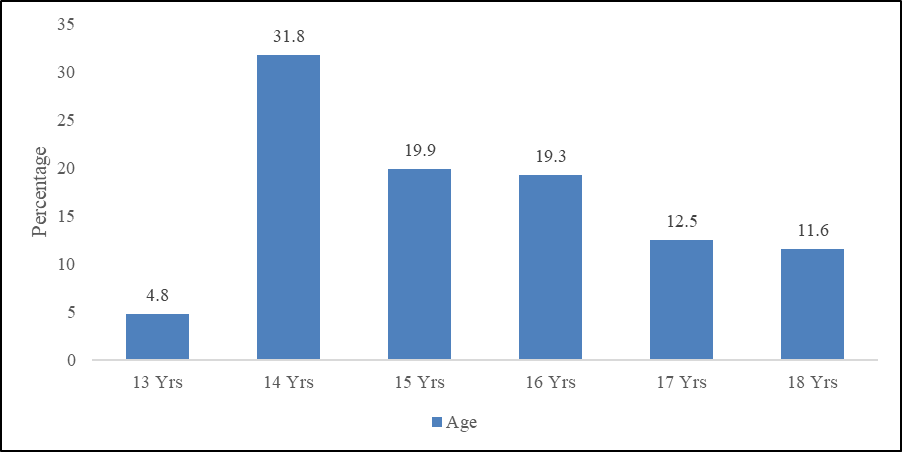
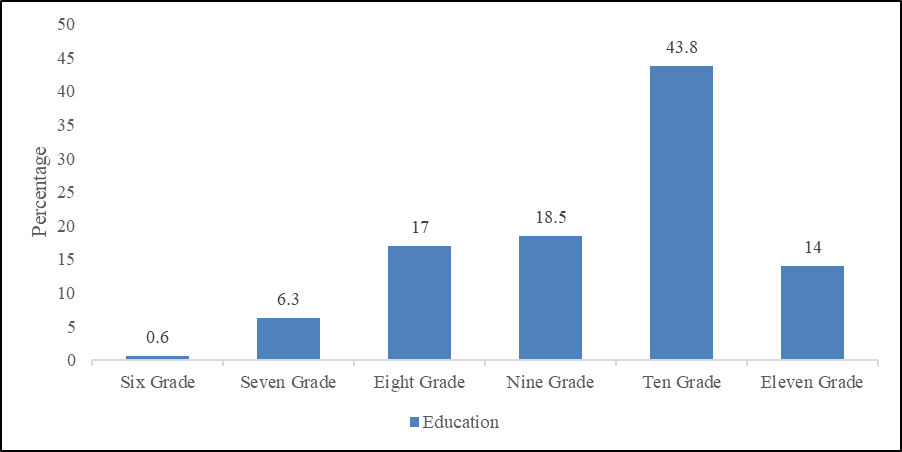
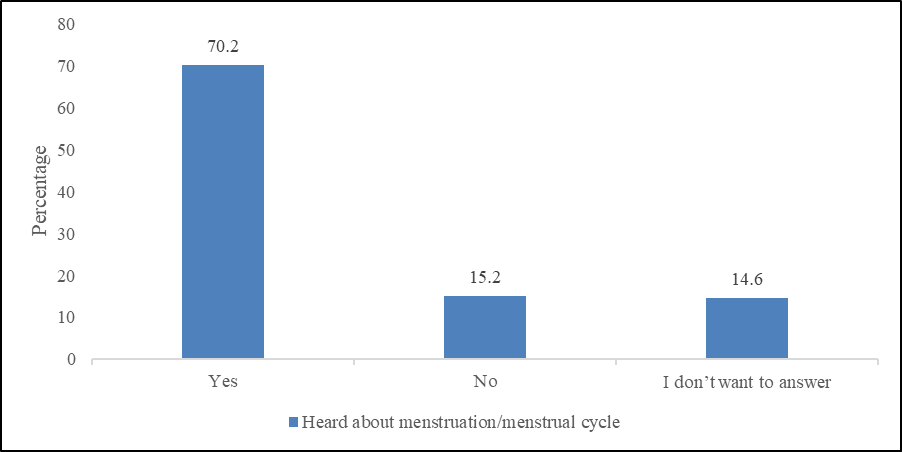
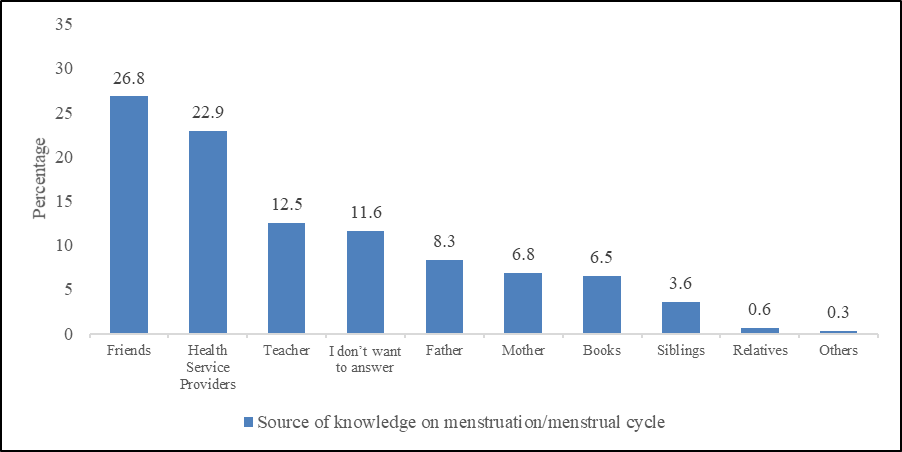
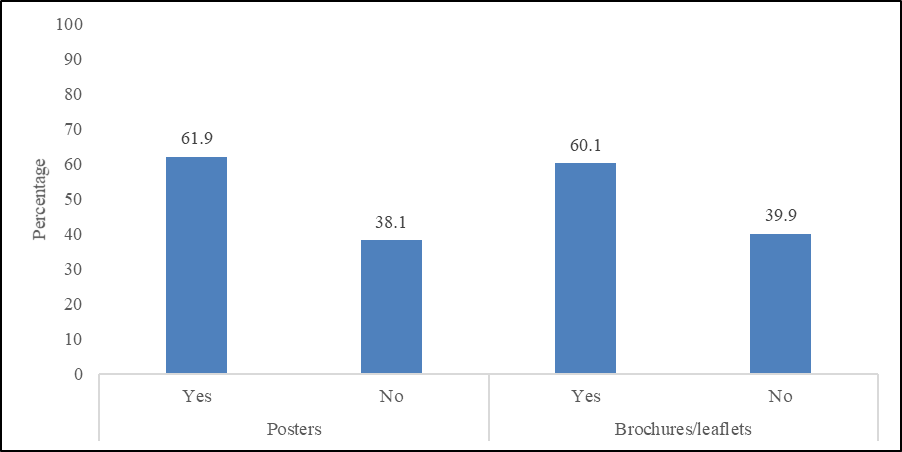

 Impact Factor: * 1.1
Impact Factor: * 1.1 Acceptance Rate: 78.89%
Acceptance Rate: 78.89%  Time to first decision: 10.4 days
Time to first decision: 10.4 days  Time from article received to acceptance: 2-3 weeks
Time from article received to acceptance: 2-3 weeks 